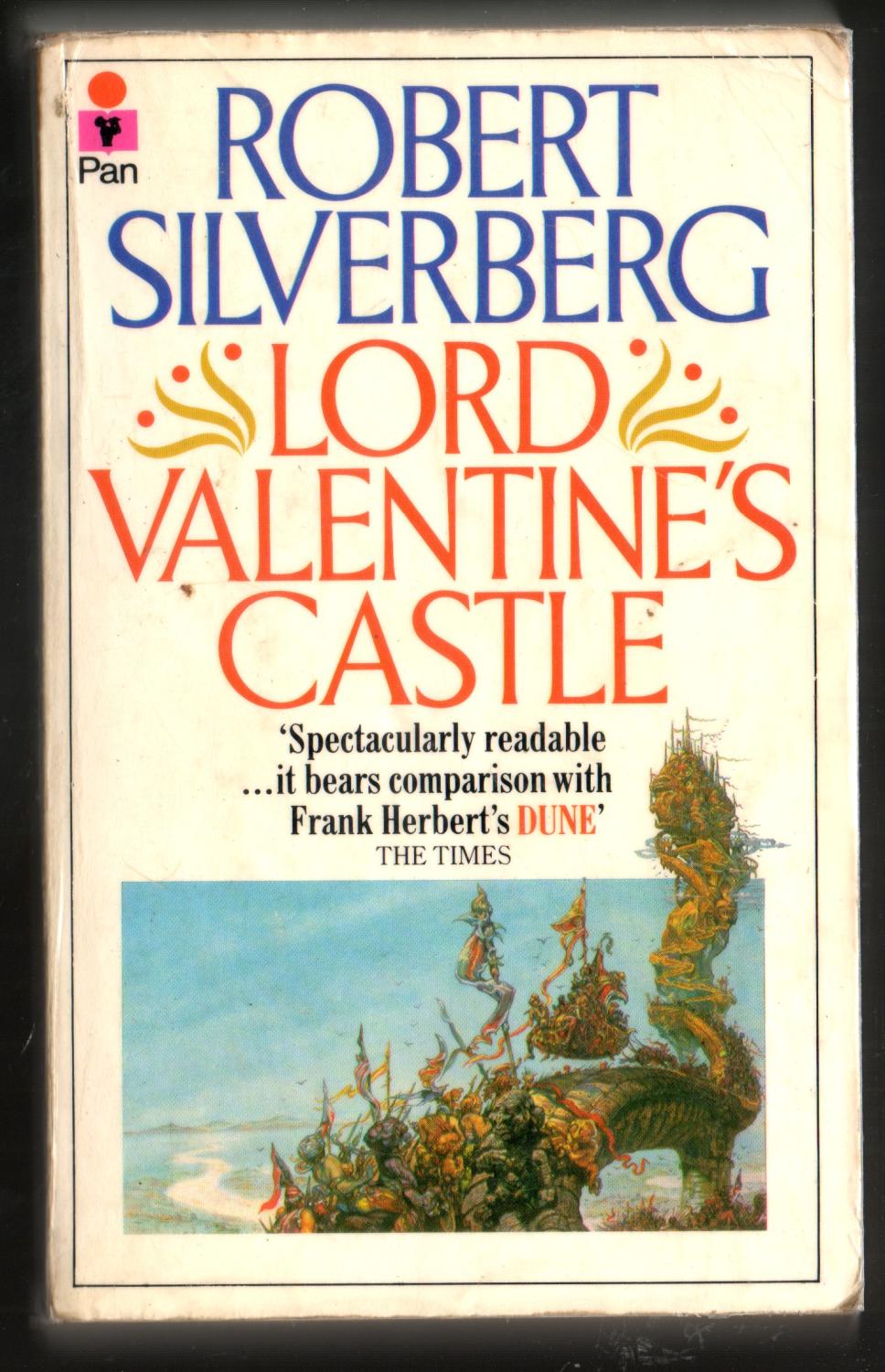 |
| The 1981 British Edition, by Pan Books. Cover art by Josh Kirby; this photograph from Abe Books. |
Majipoor, for the uninitiated, is a planet many times larger than Earth, if less dense. It has been settled by mankind and by various aliens for many thousands of years, though it is also occupied by the Metamorphs, the natives of the planet. Science Fiction? Not quite; however many far-future devices might be employed by denizens of Majipoor, (hovering floaters, energythrowers), an agricultural career seems more likely than not. Moreover, forms of magic appear to exist and the story of Lord Valentine's Castle is about a deposed prince reclaiming his throne. (This article from Tor places it firmly in the Science Fantasy camp).
This extends to the system of government; however laissez-faire day to day or local governance may get, the world of Majipoor operates something like 'an adoptive divine-right duumvirate buttressed by two dream-manipulating spiritual powers'. This is never really questioned, even by the rare absolute outsider we see. The fact that criminals can be pursued by the Long Arm of the Law into their dreams is taken as completely natural. (I might stake money on there being a Young Adult dystopia based on this very premise; that Silverberg has an entire world just take it as read is interesting.) The system, incidentally, seems to work: war is virtually unknown on Majipoor, though other ills are not. This gentleman describes it as somewhat utopian; I am not so sure - however pleasant it may be I suspect it has quite enough worldly cares, obsessions and woes to disqualify it.
(This site has a great deal more on the details of Majipoor).
What has this largely vital, if slow-changing world to do with Aesthetics of Ruin? I shall draw on this article from Manola's Against the Wicked City - which is well worth reading.
From Lord Valentine's Castle: 'The mount was comfortable, as well it might be, for they had been bred for comfort for thousands of years, these artificial animals, these witchcraft creatures out of the old days, strong and tireless and patient, able to convert any sort of trash into food. The skill of making them was long forgotten, but now they bred of themselves, like natural animals, and it would be a slow business of Majipoor getting around without them.'
'The new road...and was paved in smooth blue-grey stuff of light resiliency, a springy, flawless roadbed that probably was of great antiquity, as were many of the best things of this world.'
'They said this Lord Valentine the Coronal lived in a castle eight thousand years old, with five rooms for every year of its existence, and that the castle sat on a mountain so tall it pierced the sky, a colossal peak thirty miles high, on whose slopes were fifty cities as big as Pidruid...The world was too big, too old, too populous for one man's mind.'
Let us set this against the aesthetics of ruin, as expressed in the above article. Players are 'tiny figures wandering a world of dead and dying titans, stumbling amidst the wreckage of mighty forces they do not understand'. These ruin-settings are 'likely to be inhabited by clans of mad and degenerate morlocks practicing weird semi-functional cargo-cult sorcery based on badly-misunderstood fragments of ancient knowledge'.
 |
| Art by Jim Burns, used as the cover for The Majipoor Chronicles. |
To compare with a near-contemporary of Lord Valentine's Castle, in Majipoor, however dwarfed by the accomplishments of the past, people do not live in the grounded spaceships of Nessus of Gene Wolfe's Book of the New Sun. Though the titular castle is vast, it is still added to by each Coronal in turn. Silverberg makes clear fairly early the tone of the novel: '...for what was the use of being alive and healthy on a world as full of wonders as Majipoor if you did not journey hither and thither on it?'
Indeed, journeying - as a travelling performer, as the Coronal on a grand procession, as a soldier on campaign - would seem to be the preferred existence of the characters. The series is never uniformly light-hearted or whimsical, but always has an eye on such moments.
If Majipoor is a world of ancient devices and societies, they have aged gracefully. The wilder portions of the landscape provide wonders for the settled lands. The loss of knowledge is not a festering sore or an absent limb, but a distant memory. The vast age of Majipoor can be daunting, but not overpowering. If you will permit the poetry, on Majipoor the titans are not dead or dying - they may, appropriately enough, be dreaming.
None of this is to hold up Majipoor as the diametric opposite to the Aesthetics of Ruin, just as a meaningful contrast, or as a different usage of some of the same elements. I have not been able to find much in the way of RPG materials for Majipoor - which is a shame. It would be interesting to hold it up to more scrutiny and comment; perhaps opening up the setting for other authors, something like the short story collection Songs of the Dying Earth, would be a valuable project.
No comments:
Post a Comment